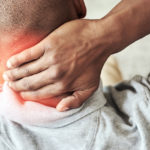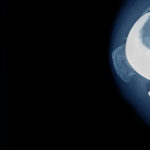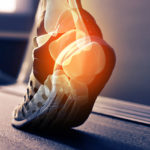February 14, 2017
Lower back pain is one of the most common ailments doctors treat, and degenerative disc disease is one of the most common causes of lower back pain. Despite this fact, it may also be one of the most misunderstood causes of back pain. Read below to learn the three biggest myths about degenerative disc disease.
Myth 1 – Degenerative Disc Disease Is Not a Disease
While it is commonly referred to as a disease, degenerating discs are a natural condition of aging. Degenerative disc syndrome is caused by wear and tear on the natural “shock absorbers” that separate the bones of the spine. For example, your car has shock absorbers, and after driving over all those bumps in the road, the shock absorbers no longer bounce back the way they did when they were new.
Similarly, the natural cushions called discs between the vertebra in the spine wear out over a lifetime of standing, walking, lifting, and living. These discs are made of water, collagen, and proteoglycans, according to Spine Universe. The disc is constructed like a jelly donut. A tough outer ring of collagen, called the annulus fibrosus surrounds and protects the inner jelly, called nucleus pulposus.
With age and everyday movement, minor injuries can cause tiny tears in the nucleus pulposus, which then causes the loss of water, making the disc thinner, flatter, and less able to bounce back. The result is reduced space between the vertebra that in turn affects the facet joints that are designed to stabilize the spine. With thinner disks, the vertebra and facets begin to move too much. The body responds by trying to reinforce the spinal column by growing small bony outgrowths called osteophytes, or spurs, that can sometimes pinch nerves and cause pain.
Myth 2 – Bulging and Herniated Discs Are the Same Thing
People often think of a herniated disc as bulging out from the spine, but a bulging disc and a herniated disc are two different conditions, according to the Mayo Clinic. A bulging disc is caused by the flattening of the disc, causing the outer rim to protrude beyond the base of the vertebra; however, it doesn’t always protrude for the full circumference of the disc. The tough annulus fibrosus needs only to protrude over a quarter of the circumference to be called a bulging disc. Consequently, depending on where the protrusion is, the bulging disc may or may not rub against a nerve and cause pain.
A herniated disc, often referred to as a ruptured disc, is caused by a crack in the outer rim or cartilage of the annulus fibrosus, and not the entire disc. A herniated disc is more likely to protrude further and irritate nerves, causing inflammation and pain.
Myth 3 – Surgery Is Required for Degenerative Disc Pain
The truth is surgery is the exception, not the rule. In reality, the majority of people with degenerative disc disease can be treated with non-surgical treatments including medications, muscle relaxers, and physical therapy. Some people may find relief from chiropractic care, acupuncture, massage, and yoga.
Once people learn that degenerative disc syndrome is age-related, they often form another misconception by thinking nothing can be done to prevent it. Actually, there are several things you can do to prevent degenerative disc syndrome:
- Exercise that focuses on core strength or strengthening the trunk muscles can help stabilize and support the spine.
- Maintaining good posture reduces stress and strain on the spine. Avoid sitting for long periods. If your job requires sitting, get up and walk around frequently throughout the day.
- Losing weight also relieves the pressure on the spine and “lightens the load” on your discs.
At Healthcare Associates the emphasis is on providing a personalized approach for each patient’s needs. We work with you to determine the underlying cause of your back pain and find the optimal treatment for you. Book an appointment today.
DISCLAIMER
The information featured in this site is general in nature. The site provides health information designed to complement your personal health management. It does not provide medical advice or health services and is not meant to replace professional advice or imply coverage of specific clinical services or products. The inclusion of links to other web sites does not imply any endorsement of the material on such websites.



